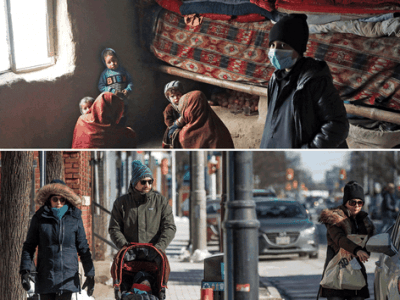
“You might need to know again that there is a god of all things; that everything is connected; every raindrop, every tree, every molecule of the earth.” – Manchan Magan from Thirty-Two Words for a Field
My family left Ireland more than 200 years ago. They came to Canada before and during the famine. When they arrived, they likely only spoke Irish, a language that let them see both the material world and another world, the one beyond. They arrived, most probably exhausted and sick and those who survived quarantine eventually forgot Irish, though my grandmother knew a few words of prayer. I’m descended from them – I have an old spinning wheel that belonged to my many-times great aunt, who brought it to Canada from Ireland. It comes from another time, culture and world view, which seemingly has been swept away by the stormy sea they crossed to get here.
I have reflected on and written about Indigenous cultures that exist here on Turtle Island and caught glimpses of ways of thinking and seeing that go beyond the everyday – the mundane world as it is. But that exploration seems to have left mainstream thinking and become the purview of scientists with their strange ideas and experiments in impossible things, like quarks – how at the smallest level, everything is both a wave and a particle; everything is connected across vast distances; everything hovers between states of being until someone actually looks at it and then it takes form.
Could I learn Irish? I feel like it is a sort of birthright. I incur advantages from the English language – working as a writer, making understandable the decisions and intentions of government and its laws. My last name is English and that language is also a birthright, but when I speak it, it feels like something has been stolen away. Maybe Irish is hiding in its pockets, where it stealthily crept and stayed, hiding from the English who invaded Ireland almost a thousand years ago. Will I go to Ireland and study Irish and see what shakes out? Find out how many words there are for simple, beautiful things, like trees and raindrops and a spinning wheel rocking back and forth on the docks, where the boat first arrived in Canada?









